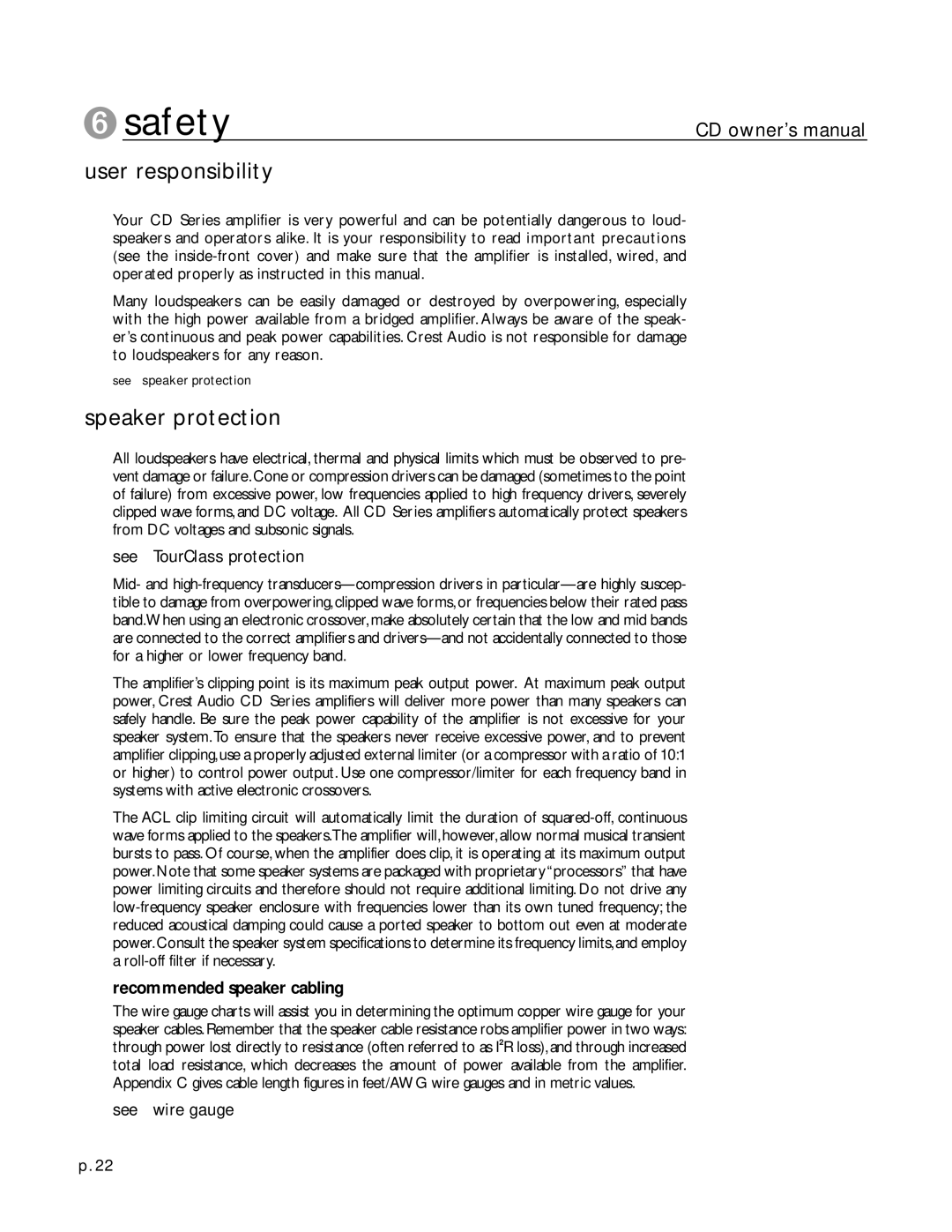CD Series specifications
Peavey CD Series loudspeakers are renowned for their robust design, durability, and high-performance sound, making them ideal for a wide range of applications, including live performances, installations, and mobile sound reinforcement. This series is characterized by its versatile range of passive and powered models that cater to the needs of both professional musicians and audio engineers.One of the main features of the Peavey CD Series is its exceptional sound quality, achieved through advanced driver technology and precise engineering. The series employs high-performance woofers and tweeters, ensuring a balanced audio reproduction across a wide frequency range. This clarity makes the CD Series particularly attractive for those seeking accurate sound for live music, speeches, or other audio playback.
The construction of the CD Series cabinets is another noteworthy characteristic. Made from high-quality plywood, these cabinets are designed for durability and resilience. The finish is carefully applied to protect against wear and tear, ensuring that the speakers can withstand the rigors of touring and heavy use. The speaker enclosures are also designed to minimize resonance and distortion, further enhancing the sound quality.
The Peavey CD Series incorporates advanced technologies, including the patented Peavey Waveguide technology, which provides a controlled dispersion of sound across the listening area. This feature allows for consistent sound coverage, making the speakers effective for larger venues where audience members are spread out. The result is a more immersive listening experience, regardless of the listener's position.
Additionally, the series includes models with built-in power amplification, eliminating the need for external amplifier setups. These powered speakers often feature integrated DSP (Digital Signal Processing), allowing users to tailor the audio output to suit specific environments or preferences. This level of customization makes the CD Series an appealing choice for those who prioritize versatility in their audio setups.
Overall, the Peavey CD Series represents a fusion of innovation and practicality. With outstanding sound quality, rugged build, and user-friendly features, it serves as a reliable choice for musicians, DJs, and audio professionals alike, offering a seamless combination of performance and durability to meet the demands of any sound reinforcement scenario. Whether for a small venue or a large event, the Peavey CD Series continues to be a favored option in the world of professional audio.
